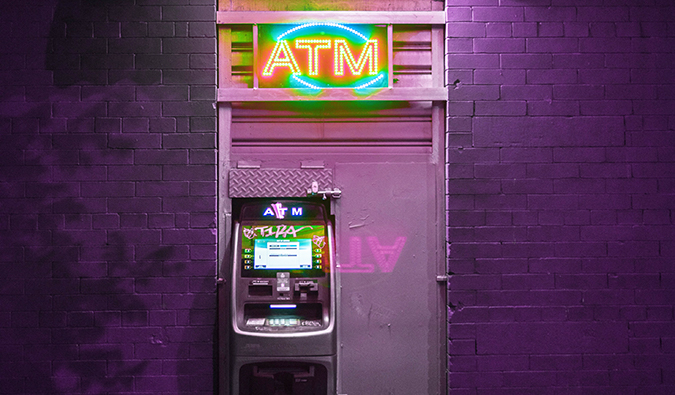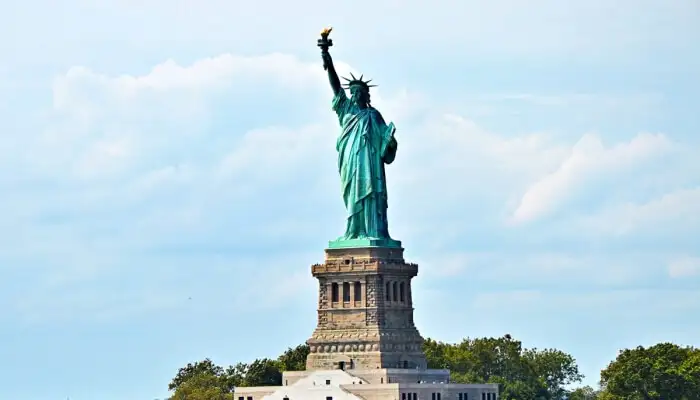Saving money for travel is one of the biggest obstacles preventing people from realizing their travel dreams. After diligently setting aside funds for a trip, the last thing you want to do is waste hard-earned money on avoidable bank fees while abroad.
Banking overseas isn’t as simple as putting your card in an ATM and withdrawing money. Especially when traveling on a budget, you must consider three essential factors:
- How to avoid paying bank fees
- How to eliminate foreign transaction charges
- How to secure a favorable exchange rate
Too many travelers unknowingly pay hefty ATM fees and credit card transaction charges while abroad. Fortunately, these fees are avoidable, and you didn’t save all that money just to hand it over to the banks, right? Every dollar saved on fees can be redirected toward food, drinks, or memorable experiences.
In this guide, we’ll explore six easy steps to eliminate bank fees while traveling, helping you maximize your travel funds.
1. Eliminate ATM Fees
ATM fees can accumulate quickly, especially if you’re on the road for an extended period. Let’s break it down: if you withdraw cash twice a week while abroad, each withdrawal may come with three types of fees:
- Your bank’s fee for using an ATM outside their network (typically $2.50 – $5 USD)
- The ATM’s fee (typically $3 – $5 USD)
- An international conversion fee (typically 1% – 3% of the transaction)
These fees add up fast. For example, if you’re paying $7 per withdrawal and withdraw twice a week, that’s $14 per week, $56 per month, or $672 per year! That’s enough for almost three weeks in Southeast Asia. Even if you only use the ATM once a week, that’s still $364 per year in fees alone.
To avoid these unnecessary fees, here are some strategies:
a. Charles Schwab High-Yield Checking Account (for US Residents)
For US travelers, the best bank to use is Charles Schwab. They offer a high-yield checking account with no fees and unlimited ATM fee reimbursements at the end of each month. This means you can use any ATM worldwide, and all fees will be refunded. The account requires no minimum deposit and comes with no monthly service fee. Since switching to Charles Schwab, I’ve saved thousands of dollars in ATM fees over the years.
b. Use the Global ATM Alliance
Another option is to choose a bank in the Global ATM Alliance, a network of major banks that have waived fees for ATM withdrawals at their partner locations. If you stick to ATMs within this network, you can avoid most charges. However, be cautious, as fees may still apply outside the network or for currency conversion. Here’s a list of some participating banks:
- Bank of America (United States)
- Barclays (UK, Spain, Portugal, and certain countries in Africa)
- BNP Paribas (France, Italy, Poland, and more)
- Deutsche Bank (Germany, Spain, Italy, and other countries)
- Scotiabank (Canada, Caribbean, Mexico)
- Westpac (Australia, New Zealand, and Pacific Islands)
Be sure to check the specific coverage areas with your bank, as fees and restrictions may vary. Bank of America, for instance, charges a 3% foreign transaction fee on non-USD withdrawals.
c. Consider Low-Fee ATM Cards
If you don’t qualify for Charles Schwab, consider a low-fee card. HSBC, for example, has ATMs globally and only charges $2.50 USD per withdrawal at non-HSBC ATMs. While not free, it’s still better than most alternatives. Additionally, Capital One doesn’t charge any withdrawal fees, though local ATM fees may apply.
For travelers from Canada, Scotia or Tangerine are excellent options, as they are part of the Global ATM Alliance. Australians can consider ING, Citibank, or HSBC, while Starling or Monzo are popular choices for UK travelers.
2. Avoid Credit Card Fees
Most credit cards charge a foreign transaction fee of 3% for purchases made overseas. That may not seem like much, but it adds up quickly if you’re using your card frequently.
However, many credit cards now offer no foreign transaction fees. Here are a few of my favorites:
- Chase Sapphire Preferred
- Capital One
- Citi Premier
For non-US citizens, websites like Australian Frequent Flyer, Credit Cards UK, and Prince of Travel list cards that don’t charge foreign transaction fees in their respective countries.
3. Minimize the Exchange Rate Penalty
When you make a purchase overseas, your bank converts the transaction into your home currency for billing. Banks typically apply a markup on the interbank rate (the rate banks use to exchange currencies), so the rate you get is usually slightly worse.
To minimize losses on exchange rates:
- Use a credit card – Credit card companies generally offer the best exchange rates. Whenever possible, use your credit card instead of cash.
- Use an ATM – After credit cards, ATMs offer the next best exchange rate, though slightly worse due to bank fees.
- Avoid ATMs in tourist areas – ATMs in hotels, hostels, or convenience stores often charge higher fees and offer poor conversion rates. Stick to ATMs at major banks for better rates.
4. Avoid Airport Currency Exchanges
Airport exchange bureaus typically offer some of the worst exchange rates you’ll find. Avoid them at all costs unless absolutely necessary. One company to steer clear of is Travelex, which is notorious for bad rates and high fees. If you must exchange money, wait until you reach a destination downtown and use a local bank or major exchange office.
5. Always Pick the Local Currency
When making a purchase with your credit card abroad, you may be asked whether you’d like to be charged in your home currency or the local currency. Always opt for the local currency. While it may seem convenient to see the amount in your home currency, the exchange rate offered for this option is generally worse than the rate your bank will provide.
6. Avoid Pre-Loading Foreign Currency Cards
Some companies offer prepaid foreign currency cards that lock in an exchange rate before your trip. However, these cards typically come with poor exchange rates and hidden fees. Unless you’re 100% certain the currency will devalue, it’s best to avoid these cards and withdraw money as needed while abroad.
Conclusion
Bank fees can accumulate into substantial amounts over the course of a long trip. By being proactive and following these strategies, you can avoid unnecessary charges and keep more money for your travels. I haven’t paid a bank fee while traveling in over fifteen years, and with these tips, you won’t have to either.
Start planning now and travel smarter! Every penny saved is another step closer to your next adventure.


